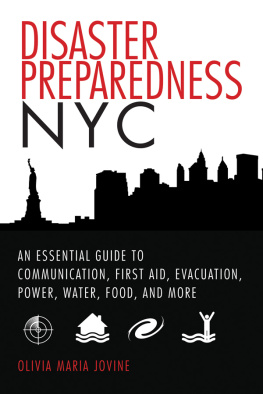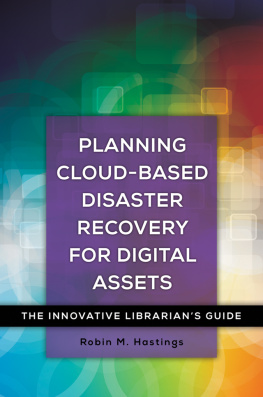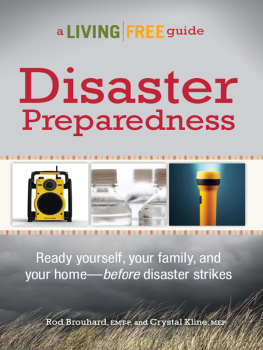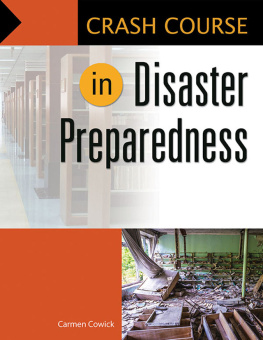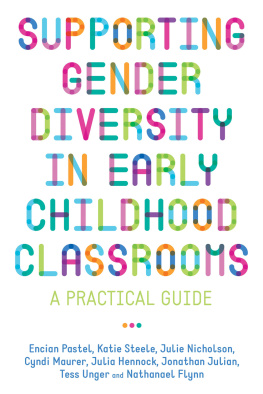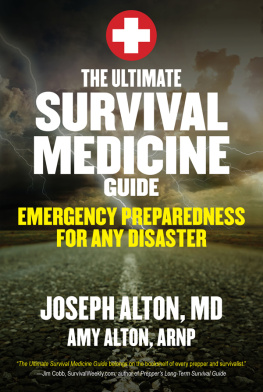
Published by Redleaf Press
10 Yorkton Court
St. Paul, MN 55117
www.redleafpress.org
2015 by Charlotte M. Hendricks and Michele B. Pettibone
All rights reserved. Unless otherwise noted on a specific page, no portion of this publication may be reproduced or transmitted in any form or by any means, electronic or mechanical, including photocopying, recording, or capturing on any information storage and retrieval system, without permission in writing from the publisher, except by a reviewer, who may quote brief passages in a critical article or review to be printed in a magazine or newspaper, or electronically transmitted on radio, television, or the Internet.
First edition 2015
Cover design by Jim Handrigan
Typesetting by Douglas Schmitz
Typeset in Signo
Library of Congress Cataloging-in-Publication Data
Hendricks, Charlotte Mitchell, 1957-
Red Leaf quick guide : disaster planning and preparedness in early childhood and school-age care settings / Charlotte M. Hendricks and Michele B. Pettibone.
pages cm.
Summary: All adults who are responsible for the care of children should be prepared for disasters. This guide provides caregivers, educators, and program staff with preparation tips and step-by-step responses to disaster situations that are based on national standards and best practices to keep children safe-- Provided by publisher.
ISBN 978-1-60554-408-3 (ebook)
1. Schools--United States--Safety measures--Handbooks, manuals, etc. 2. Schools--Security measures--United States--Handbooks, manuals, etc. 3. School crisis management--Planning--United States--Handbooks, manuals, etc. 4. Emergency management--United States--Handbooks, manuals, etc. 5. Early childhood education--United States--Administration. 6. School management and organization--United States--Handbooks, manuals, etc. I. Pettibone, Michele B. II. Redleaf Press. III. Title.
LB2864.5.H46 2015
371.20973--dc23
2014033523

CONTENTS



Every individual responsible for the care of children may at some point be considered a service worker and should be prepared to respond immediately and appropriately to disaster situations. Directors, managers, and owners of early childhood and school-age care programs are responsible for planning and providing training to staff members and volunteers.
The possibility of disasters has always been present. An event such as a tornado, fire, earthquake, or flood may have little or no warning leaving no time to prepare. An event such as a power outage, chemical spill, or act of violence may be isolated at your site or impact a community or neighborhood. Whatever the situation, the objective is to remain calm and take appropriate action to keep children and yourself safe.
This Quick Guide is written for early childhood and school-age programs, including family child care, center-based, corporate, Head Start and Early Head Start, pre-K, after-school care, and other programs serving children from birth to age twelve. It is designed to be a quick guidea resource for and teachers to pick up and quickly find a reasonable response to a disaster situation. Directors and others can also use the book to train staff and volunteers.
This Quick Guide can help to
identify disaster situations that may occur,
prepare for emergencies, and
respond to events.
Every program caring for children, regardless of the size or setting, should have a written specific to their program and community. This Quick Guide is meant to supplement, not replace, that written plan.
There are three parts to this book. , Respond to Disaster Situations, is for staff working directly with children. It lays out the steps to take in each disaster situation and is organized according to these responses:
Evacuate
Shelter
Designate a notebook for program staff and teachers to write notes specific to their disaster response.
, For Directors and Site Leaders, follows with information for program directors, staff members, and family child care providers to consider when developing and reviewing written disaster preparedness plans.
Planning, preparation, and practice are essential, and help both adults and children to stay calm and respond appropriately.
Be aware of the types of disasters that are most likely to occur in your community and geographic area and follow federal, state, and local regulations.
Collaborate with local personnel when developing and reviewing the written plan.
The book ends with a glossary of terms and a bomb threat report form that you can photocopy and use at your program.
In this Quick Guide, program refers to any early childhood or school-age care environment, from private family child care providers serving only a few children to large center-based organizations which may enroll hundreds or even thousands of children. Facility refers to any structure where children are cared for, such as a private residence, a center with several nurseries and classrooms, or a child care program within a large office building.


Most programs plan and practice fire drills and weather events (e.g., tornado). However, it is important to plan for all types of disaster events that might occur.
The risk of a specific disaster impacting a program may vary based on location, involving both geography and the community environment. The risk may also be related to an industry, a military base, or the transportation system, including railways, highways, and waterways. Review disaster events that have occurred in the area in the past, and consider events that may occur in the future.
Consider these examples:
Fire, explosion, and wildfire
Earthquake and landslide
Tornado, hurricane, tsunami, and flooding
Snow and ice storm
Pipeline explosion and hazardous materials spill
Power outage and transportation system breakdown
Civil unrest, known criminal or violent individual in the area, and active shooter
To learn more about the specific disaster risks, check the website. The local emergency response agency (e.g., fire department) can also be consulted to identify the disaster risks for your program.
What types of disaster situation are more likely to occur in your community or geographic area?


Next page

